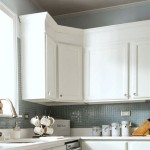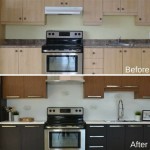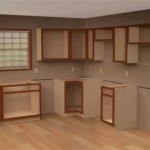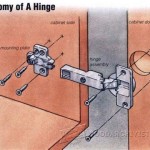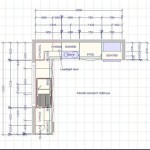Standard Measurements For Kitchen Drawers
Kitchen drawers are essential components of any functional kitchen design, providing accessible storage for a wide variety of items, from utensils and cookware to food containers and pantry staples. Efficient kitchen design necessitates careful consideration of drawer dimensions to maximize space utilization and ensure ease of use. Understanding standard measurements for kitchen drawers allows homeowners, designers, and contractors to plan layouts effectively, select appropriate hardware, and optimize the overall functionality of the kitchen space.
While custom drawers are always an option, understanding standard sizes provides a solid foundation for planning and budgeting. Standard drawer dimensions generally adhere to a consistent framework, enabling modular cabinet construction and simplifying the replacement process. Deviations from standard sizes likely increase costs and complicate installation, emphasizing the importance of incorporating standard measurements whenever feasible.
Understanding Drawer Heights and Depths
Drawer height is a critical measurement that determines the types of items that can be comfortably stored within the drawer. Standard kitchen drawer heights typically range from 4 inches to 12 inches. Smaller drawers, often referred to as utility drawers, are typically around 4 inches to 6 inches in height. These are well-suited for storing cutlery, utensils, and small gadgets. Medium-height drawers, ranging from 7 inches to 9 inches, are versatile and can accommodate a variety of items, including cookware lids, mixing bowls, and food storage containers. Taller drawers, measuring 10 inches to 12 inches, are designed for storing larger items like pots, pans, and even small appliances.
The selection of drawer height should be determined by the intended use of the drawer and the items intended to be stored within. It's beneficial to accurately measure the height of the items you plan to store and select a drawer height that provides adequate clearance to ensure easy access and prevent overcrowding. Overcrowding can damage items and make it difficult to locate what you need quickly.
Drawer depth, often referred to as drawer extension, is another crucial measurement that impacts the accessibility of stored items. Standard drawer depths typically range from 18 inches to 24 inches. A drawer depth of 18 inches is commonly used for base cabinets with a standard depth of 24 inches, leaving a few inches of space behind the drawer box for plumbing or electrical components. Drawers with a depth of 21 inches are also relatively common, offering slightly more storage space while still accommodating standard cabinet dimensions. Drawers extending to a full 24 inches offer the maximum storage capacity within a standard base cabinet. The choice of drawer depth depends on the available space within the cabinet and the user's preference for accessibility and storage capacity.
Consider the effort required to reach items at the back of deep drawers. Full-extension drawer slides are highly recommended for deeper drawers to ensure full accessibility to the contents. These slides allow the drawer to extend fully out of the cabinet, eliminating the need to reach into the back of the drawer and minimizing the risk of straining or dropping items.
Standard Drawer Widths and Cabinet Considerations
Drawer width is directly related to the width of the cabinet in which the drawer is housed. Standard base cabinet widths typically range from 9 inches to 48 inches, increasing in increments of 3 inches. Therefore, standard drawer widths also follow this general progression. For example, a 30-inch wide base cabinet can accommodate a single 27-inch wide drawer box (allowing for side clearance for the drawer slides) or multiple smaller drawers. It's crucial to account for the space required for drawer slides when determining the actual width of the drawer box. Typically, 1 to 1.5 inches of clearance is required on each side of the drawer box for the slides to function properly.
When planning the layout of kitchen drawers, consider the overall aesthetic and functional balance. A large number of narrow drawers may appear cluttered, while a few excessively wide drawers may be difficult to open and close, especially if they are heavily loaded. A balanced approach, incorporating a mix of drawer widths and heights, maximizes storage efficiency and creates a visually appealing kitchen design. The kitchen's workflow should also be considered. Frequently used items should be stored in easily accessible drawers, while less frequently used items can be stored in higher or lower drawers that require more reaching.
Cabinet construction methods also influence the available space for drawers. Framed cabinets, which have a face frame surrounding the cabinet opening, typically require slightly smaller drawer boxes to accommodate the frame. Frameless cabinets, also known as European-style cabinets, offer more interior space because they lack a face frame. This allows for larger drawer boxes within the same overall cabinet dimensions. Understanding the type of cabinet construction is essential for accurately determining the maximum drawer size that can be installed.
Materials and Hardware: Impact on Drawer Dimensions
The materials used to construct drawers and the type of hardware selected also influence the overall drawer dimensions and functionality. Drawer boxes are typically constructed from solid wood, plywood, or particleboard. Solid wood drawers offer the greatest durability and aesthetic appeal, but they are also the most expensive. Plywood drawers provide a good balance of strength, stability, and cost. Particleboard drawers are the least expensive option, but they are also the least durable and susceptible to moisture damage.
The thickness of the drawer box material also affects the interior drawer dimensions. Thicker materials reduce the interior space available for storage. Typically, drawer box materials range from 1/2 inch to 3/4 inch in thickness. Carefully consider the material thickness when calculating the usable storage space within the drawer.
Drawer slides are another critical component that impacts drawer dimensions and functionality. There are several types of drawer slides available, including side-mount slides, under-mount slides, and center-mount slides. Side-mount slides are the most common type and are mounted to the sides of the drawer box and the cabinet walls. Under-mount slides are mounted underneath the drawer box and provide a cleaner, more streamlined appearance. Center-mount slides are mounted beneath the center of the drawer box and are typically used for smaller, lighter-duty drawers. The type of drawer slide selected determines the amount of side clearance required between the drawer box and the cabinet walls. Full-extension slides, as mentioned previously, provide complete access to the drawer's contents, while three-quarter extension slides only allow the drawer to extend partially out of the cabinet.
Drawer fronts are attached to the drawer boxes and provide the visible face of the drawer. Drawer fronts can be constructed from a variety of materials, including wood, laminate, and metal. The thickness and style of the drawer front can also impact the overall drawer dimensions. Consider the desired aesthetic and the functional requirements when selecting drawer fronts. Ensure that the drawer front is securely attached to the drawer box and that it aligns properly with the surrounding cabinets and drawers.
Finally, drawer pulls and knobs are functional and decorative elements that enhance the usability and aesthetic appeal of kitchen drawers. The size and style of the drawer pulls and knobs should be proportionate to the size of the drawer front. Consider the ergonomics of the drawer pulls and knobs, ensuring that they are comfortable to grip and easy to use. Ensure proper installation to maintain a tight secure fit.
By carefully considering these standard measurements and the various factors that influence drawer dimensions, homeowners, designers, and contractors can create functional and aesthetically pleasing kitchen spaces that meet their specific storage needs and enhance the overall efficiency of the kitchen.

Kitchen Cabinet Drawer Dimensions Standard Inspiration Ideas 3 Decorating Cabinets Height Measurements

Proper Depth For Frameless Cabinets

Cabinet Face Dimensions

Cabinet Sizes Blok Designs Ltd

Image Result For Kitchen Drawer Size Drawers Cabinet Dimensions

Base Cabinet Size Chart Builders Surplus

3 Types Of Kitchen Cabinets Size Dimensions Guide Guilin

Kitchen Cabinet Sizes What Are Standard Dimensions Of Cabinets

Best Drawer Slides Ultimate Guide To Choosing Cabinet

2024 Kitchen Cabinet Drawer Dimensions Counter Top Ideas Check More At Http Ww Sizes Standard Drawers
Related Posts

